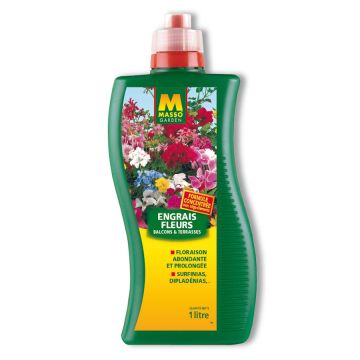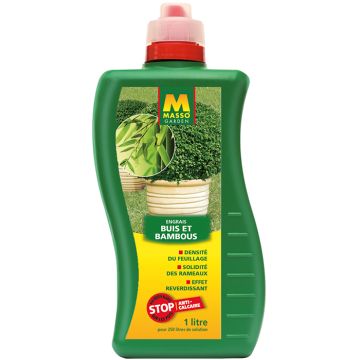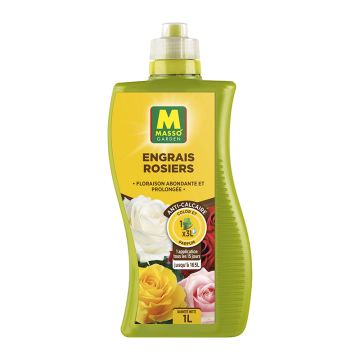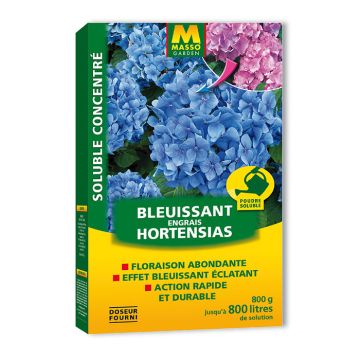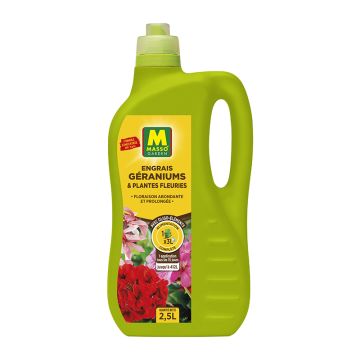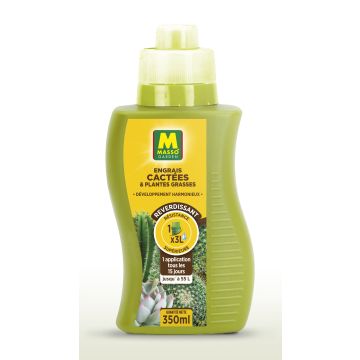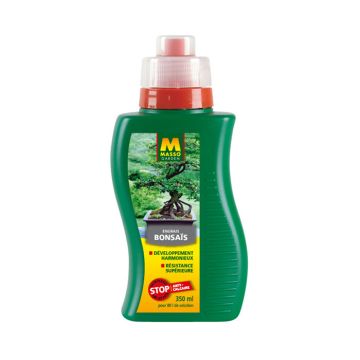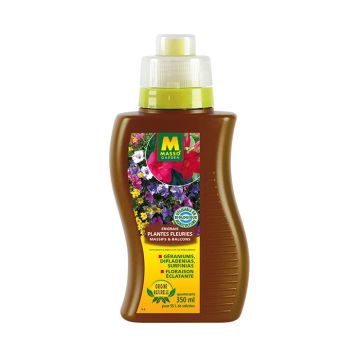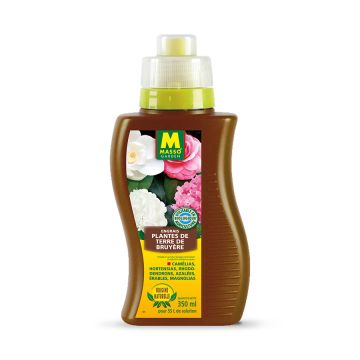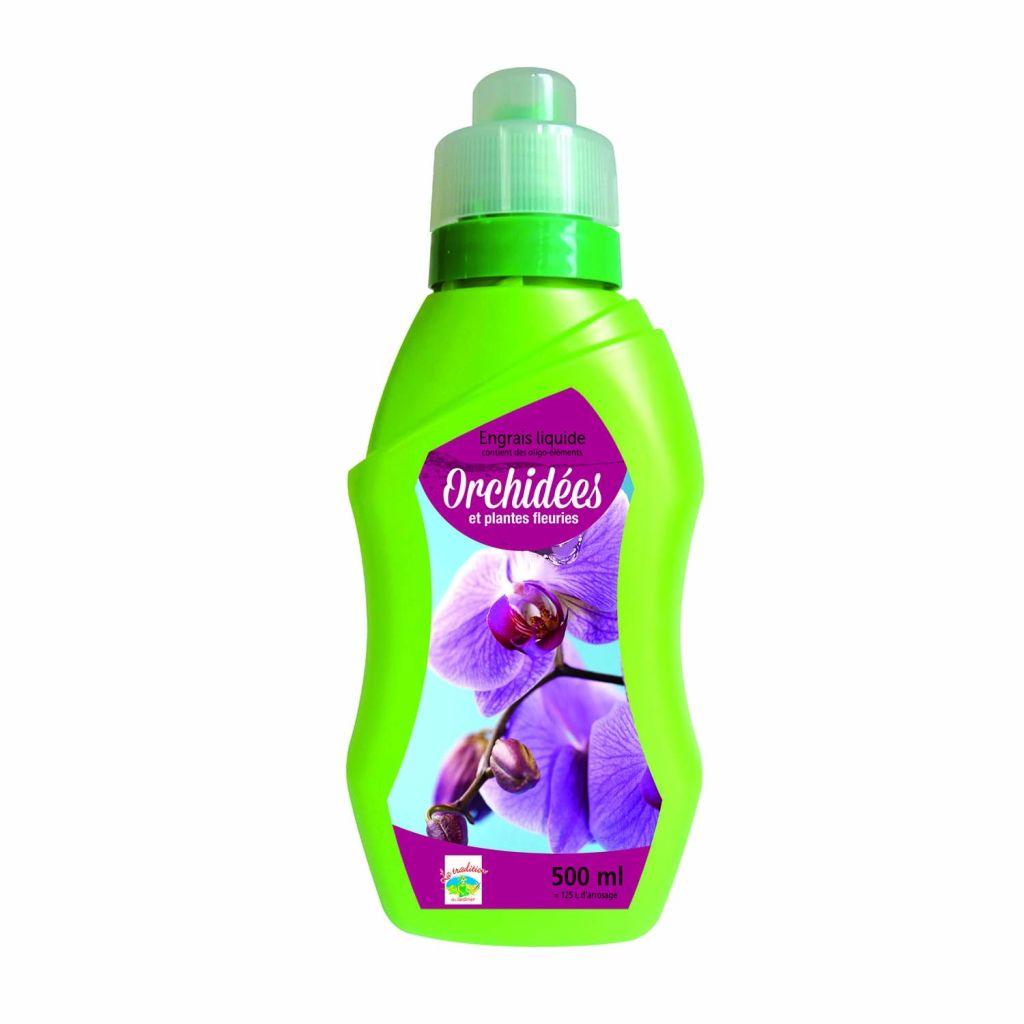

Liquid Orchid Fertiliser NPK 4-6-6 with Trace Elements, 0.5L
Liquid Orchid Fertiliser NPK 4-6-6 with Trace Elements, 0.5L
Perfect
Lydie , 08/10/2024
Special offer!
Receive a €20 voucher for any order over €90 (excluding delivery costs, credit notes, and plastic-free options)!
1- Add your favorite plants to your cart.
2- Once you have reached €90, confirm your order (you can even choose the delivery date!).
3- As soon as your order is shipped, you will receive an email containing your voucher code, valid for 3 months (90 days).
Your voucher is unique and can only be used once, for any order with a minimum value of €20, excluding delivery costs.
Can be combined with other current offers, non-divisible and non-refundable.
Home or relay delivery (depending on size and destination)
Schedule delivery date,
and select date in basket
We guarantee the quality of our plants for a full growing cycle, and will replace at our expense any plant that fails to recover under normal climatic and planting conditions.
The liquid fertiliser for Orchids NPK 4-6-6 with trace elements is a mineral fertiliser that optimizes the growth and flowering of orchids as well as all your flowering plants in planters, flower pots or flower beds. It prevents deficiencies, limits leaf yellowing and provides all the essential nutrients. It is enough to prepare 125 litres of nutrient solution.
The different species of epiphytic orchids marketed are generally grown in an artificial substrate that does not sufficiently meet the long-term needs of these plants. It is therefore important to provide nutrients to these plants at the right time, during their growth and flowering period. Orchids are not fed during their resting period. Rainwater is better for watering and feeding. Only feed substrate that has been moistened 24 hours in advance.
This fertiliser for orchids and flowering plants is in the form of a concentrated solution of nutrients to be diluted in water. It does not come from organic matter from living organisms, but from inert mineral matter such as certain rocks. It has the formulation: NPK 4-6-6 with trace elements. This means that it is composed of:
- 4% Nitrogen (N): this element contributes to the development of non-reproductive aerial parts of the plant, especially leaves and stems.
- 6% Phosphorus (P), which strengthens plant resistance and contributes to root development.
- 6% Potassium (K): essential for good harvests, it contributes to promoting flowering and fruit development.
-
Water-soluble trace elements: 0.013% Boron (B), 0.003% Copper (Cu) chelated by EDTA, 0.021% iron chelated by EDTA (Fe), 0.011% Manganese (Mn) chelated by EDTA, 0.001% molybdenum (Mo), 0.006% Zinc (Zn) chelated by EDTA.
Uses: from February to November. Avoid feeding an orchid that has just been repotted or shows signs of dehydration. This fertiliser is suitable for phalaenopsis and cymbidium. Also recommended for bedding plants and container plants: petunias, begonias, surfinias, lobelias, chamomiles, geraniums, pelargoniums, nemesis, fuchsias, impatiens, for abundant and prolonged flowering with vibrant colours.
Dosage: 1 capful or 20 ml/ 5L of water. You can reduce the doses by half but apply fertiliser more frequently to your orchids.
To live and multiply, plants need water, about twenty nutrients that they find in mineral form in the soil, carbon dioxide (CO2) present in the air, and solar energy essential for photosynthesis. The basic elements, called macronutrients, are nitrogen (N), phosphorus (P), and potassium (K). They must be present in the soil in significant quantities. Secondary elements, less important in terms of quantity but nevertheless essential, are calcium (Ca), sulfur (S), and magnesium (Mg). Finally, trace elements, necessary in very small quantities, are represented by iron (Fe), manganese (Mn), molybdenum (Mo), copper (Cu), boron (B), zinc (Zn), chlorine (Cl), sodium (Na), cobalt (Co), vanadium (V), and silicon (Si). The role of fertiliser is to compensate for soil deficiencies and provide, through optimal dosage, the elements that promote plant growth, flowering and fruit production, or the development of roots, bulbs, and tubers.
Technical features

Detailed features
Tips
Tips
Other Liquid fertilisers
View all →-
, onOrder confirmed
Reply from on Promesse de fleurs
Haven't found what you were looking for?
Hardiness is the lowest winter temperature a plant can endure without suffering serious damage or even dying. However, hardiness is affected by location (a sheltered area, such as a patio), protection (winter cover) and soil type (hardiness is improved by well-drained soil).

Photo Sharing Terms & Conditions
In order to encourage gardeners to interact and share their experiences, Promesse de fleurs offers various media enabling content to be uploaded onto its Site - in particular via the ‘Photo sharing’ module.
The User agrees to refrain from:
- Posting any content that is illegal, prejudicial, insulting, racist, inciteful to hatred, revisionist, contrary to public decency, that infringes on privacy or on the privacy rights of third parties, in particular the publicity rights of persons and goods, intellectual property rights, or the right to privacy.
- Submitting content on behalf of a third party;
- Impersonate the identity of a third party and/or publish any personal information about a third party;
In general, the User undertakes to refrain from any unethical behaviour.
All Content (in particular text, comments, files, images, photos, videos, creative works, etc.), which may be subject to property or intellectual property rights, image or other private rights, shall remain the property of the User, subject to the limited rights granted by the terms of the licence granted by Promesse de fleurs as stated below. Users are at liberty to publish or not to publish such Content on the Site, notably via the ‘Photo Sharing’ facility, and accept that this Content shall be made public and freely accessible, notably on the Internet.
Users further acknowledge, undertake to have ,and guarantee that they hold all necessary rights and permissions to publish such material on the Site, in particular with regard to the legislation in force pertaining to any privacy, property, intellectual property, image, or contractual rights, or rights of any other nature. By publishing such Content on the Site, Users acknowledge accepting full liability as publishers of the Content within the meaning of the law, and grant Promesse de fleurs, free of charge, an inclusive, worldwide licence for the said Content for the entire duration of its publication, including all reproduction, representation, up/downloading, displaying, performing, transmission, and storage rights.
Users also grant permission for their name to be linked to the Content and accept that this link may not always be made available.
By engaging in posting material, Users consent to their Content becoming automatically accessible on the Internet, in particular on other sites and/or blogs and/or web pages of the Promesse de fleurs site, including in particular social pages and the Promesse de fleurs catalogue.
Users may secure the removal of entrusted content free of charge by issuing a simple request via our contact form.
The flowering period indicated on our website applies to countries and regions located in USDA zone 8 (France, the United Kingdom, Ireland, the Netherlands, etc.)
It will vary according to where you live:
- In zones 9 to 10 (Italy, Spain, Greece, etc.), flowering will occur about 2 to 4 weeks earlier.
- In zones 6 to 7 (Germany, Poland, Slovenia, and lower mountainous regions), flowering will be delayed by 2 to 3 weeks.
- In zone 5 (Central Europe, Scandinavia), blooming will be delayed by 3 to 5 weeks.
In temperate climates, pruning of spring-flowering shrubs (forsythia, spireas, etc.) should be done just after flowering.
Pruning of summer-flowering shrubs (Indian Lilac, Perovskia, etc.) can be done in winter or spring.
In cold regions as well as with frost-sensitive plants, avoid pruning too early when severe frosts may still occur.
The planting period indicated on our website applies to countries and regions located in USDA zone 8 (France, United Kingdom, Ireland, Netherlands).
It will vary according to where you live:
- In Mediterranean zones (Marseille, Madrid, Milan, etc.), autumn and winter are the best planting periods.
- In continental zones (Strasbourg, Munich, Vienna, etc.), delay planting by 2 to 3 weeks in spring and bring it forward by 2 to 4 weeks in autumn.
- In mountainous regions (the Alps, Pyrenees, Carpathians, etc.), it is best to plant in late spring (May-June) or late summer (August-September).
The harvesting period indicated on our website applies to countries and regions in USDA zone 8 (France, England, Ireland, the Netherlands).
In colder areas (Scandinavia, Poland, Austria...) fruit and vegetable harvests are likely to be delayed by 3-4 weeks.
In warmer areas (Italy, Spain, Greece, etc.), harvesting will probably take place earlier, depending on weather conditions.
The sowing periods indicated on our website apply to countries and regions within USDA Zone 8 (France, UK, Ireland, Netherlands).
In colder areas (Scandinavia, Poland, Austria...), delay any outdoor sowing by 3-4 weeks, or sow under glass.
In warmer climes (Italy, Spain, Greece, etc.), bring outdoor sowing forward by a few weeks.






























